Fifty kilometres and the Rhine River separate Alsace from Germany. Just like in Germany the white wines dominate here, and just as in Germany it is riesling that is the iconic grape. Perhaps this is where the similarities end since Alsatian wines have their very own special character which is neither French nor German, but simply Alsatian.
Alsace is separated from the rest of France by the Vosges Mountains. In total the wine district is some 170 km long, stretching from Strasbourg down to just north of Basel. It is full of picturesque wine villages. The most visited is perhaps Riquewihr. This whole village is a cultural heritage site. 90% of the houses are from before 1640. But also Ribeauvillé, Eguisheim, Colmar and many others are more than worth a visit and are very popular tourist attractions.
Tired of the rain? Go to Alsace!
Vosges is a long and broad mountain range with a lot of forest and but not many high peaks. One reaches up to the quite respectable altitude of 1,200 meters. The mountain range protects the region from rain, making Alsace extremely poor in rainfall. Colmar has 500 mm of rain per year, which is less than Marseilles. However, west of the mountains they have 1500 mm. Winter is cold, but the summer hot and long which means that the grapes often have time to reach perfect ripeness.
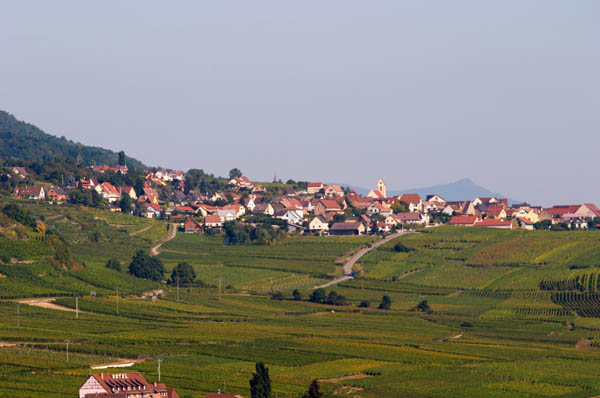
In total Alsace has 13 000 ha of vineyards that 7,000 winemakers share. That means that some have very small plots. And that in turn means that not everyone can make their own wine. Cooperatives are important in Alsace and some are also very good.
Alsace is perhaps the only French wine region that was not founded by the Romans. That may be true or not but it was in any case not an important wine region in Roman times. It was not until the 7th century that Alsace became a famous wine region and in the 1300s the wine had become among the most famous and most expensive in Europe. They had a golden era around the 15th and 16th century. The export numbers that still exist from that day are clear evidence.
French or German? Both, depending on the wars.
It was quite complicated situation as regards nationality before the 30-years war. The national boundaries were fluid and Alsace was just on this frequently changing boundary where constant battles were fought. The 30-years war affected Alsace very much and the population halved. This led to the French King Louis XIV (Alsace had become French) gave away land for free to those who wanted to settle there.
People moved here and the area under vines grew. But the quality of the wines decreased slowly but surely. The new arrivals planted vines on the plains rather than on the slopes. Here the soil was fertile and yields were high. This deterioration of the quality of the wines would not be reversed until after the Second World War.
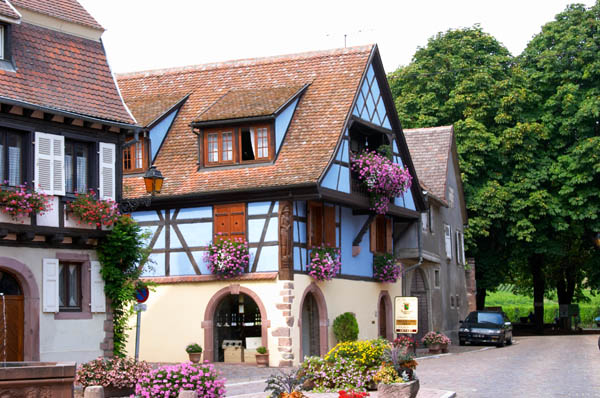
At the start of the Franco-German war of 1870 there was 65,000 ha planted with vines compared to the current 13,000 ha. Alsace became German after the war ended in 1872. It was during this period that there were major problems with mildew, bigger problems actually than with Phylloxera that did not affect Alsace until around 1904 (again, thanks to the Vosges Montains).
To survive the Phylloxera plague the Germans chose mainly to plant hybrids and crosses of different varieties that had been developed to be resistant to all kinds of pests and diseases. These grapes were also planted in Alsace.
Renaissance in Alsace after the wars
After the First World War, Alsace became French again and started slowly to prioritize quality over quantity. They began to do away with the hybrids and instead plant the traditional Alsatian varieties and also alone to plant on the slopes.
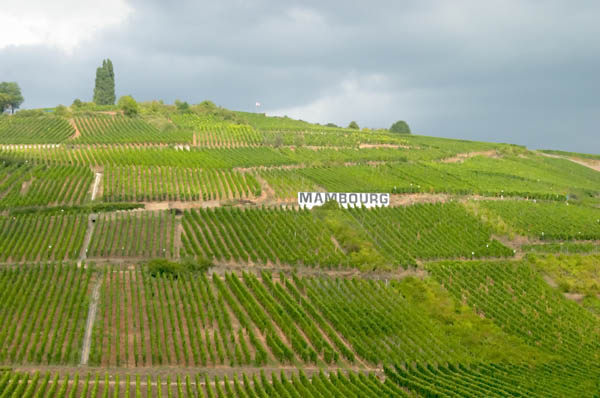
They were well on their way to legislate on this when World War II intervened and Alsace was occupied by the Germans. After this intermission of five years came legislation on permitted grape varieties and they also designated areas for wine growing. This meant that the acreage eventually came down from the 65,000 ha it was in the late 1800s to today’s 13,000 ha.
In 1962 Alsace received its appellation controlee designation.
Vine varieties in the high seat
The grapes varieties occupy something of a unique position in Alsace. Yes, they are important in all wine regions, they are, after all, the raw material for wine. The specificity of Alsace is that since a long time back they use the name of the grape variety on the label, they even name their wines after the name of the grape.
The “entry level” Alsace wines are made from sylvaner, pinot blanc and chasselas. The best and most famous grapes are riesling, gewurztraminer, pinot gris and muscat. Here is a brief introduction to these noble grape varieties:
Riesling is an aromatic grape with notes of flowers, pears and citrus fruits. The acidity is distinct and often a riesling will be crisp and even mineral. A riesling wine is most often an elegant wine and it goes well both with foie gras and different kinds of fish, chicken and veal. Riesling grapes are sometimes picked when very ripe, even overripe, and also sometimes even when affected by noble rot, so you can also find semi-sweet and sweet wines from this grape.
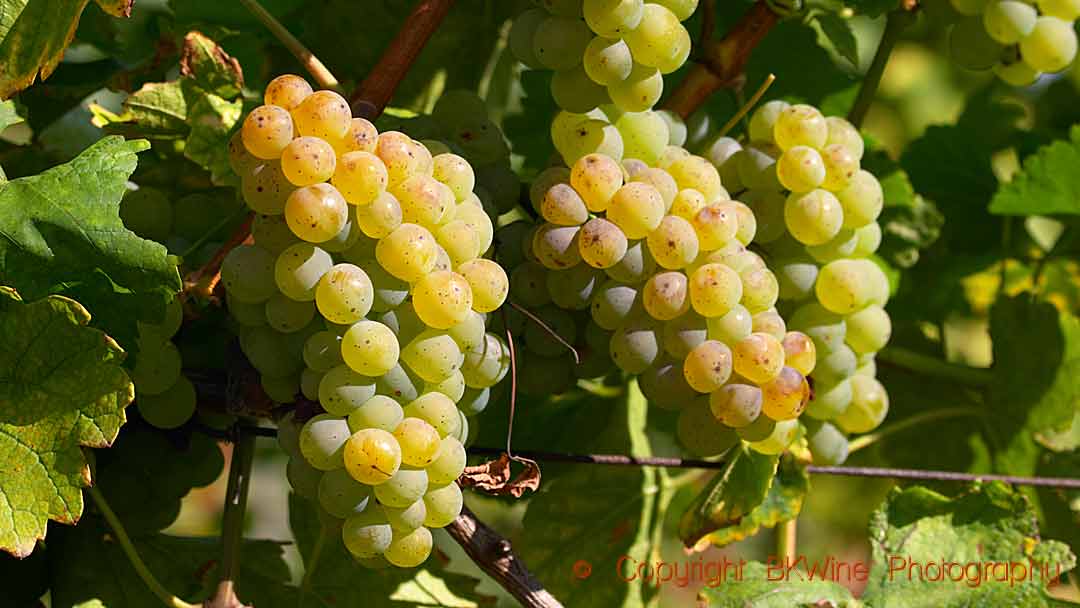
Pinot gris (formerly also known as tokay-pinot gris): it gives a full-bodied wine with character of honey and nuts. Sometimes it has a particularly smoky and spicy note. The acidity is not as prominent as in a riesling. The Alsace people drink pinot gris both with the regional foie gras and with the choucroute (Alsatian sauerkraut), but the wine also goes well with game birds.
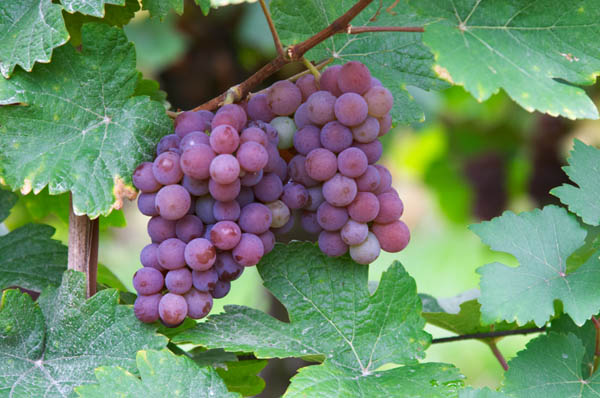
Gewurztraminer gives very characteristic wines that are easy to recognize: a nearly overwhelming, perfumed, aromatic nose and taste. The smell often feels a little sweet but the wine can be quite dry. But sometimes it has a little residual sweetness on the palate. It goes well with with foie gras, smoked salmon, spicy food, strong cheeses and as an aperitif.
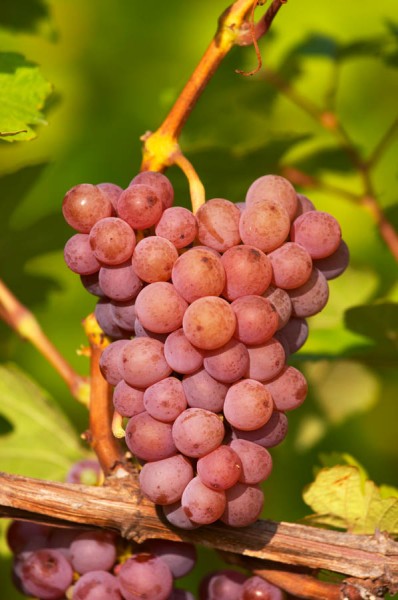
Muscat also has a very aromatic, slightly sweet aroma with a grape-like, fresh and (often) dry taste. Often very similar in character the muscat table grapes that you eat. Especially suitable as an aperitif.
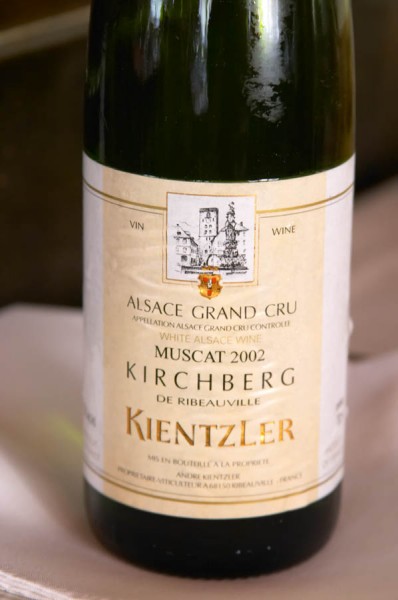
Alsace Grand Cru
The Grand Cru designation was introduced in 1975 when Schlossberg was given grand cru status. But it was not until 1982 that it was broadened to include in total 25 areas (vineyards) that were considered worthy of this higher status because of their location, soil and microclimate. Today there are 51. Some famous winemakers, such as Léon Beyer, Hugel and Trimbach, have criticised the system and say that the Grand Cru status is given too easily to vineyards.
That may be so, but the Grand Cru system does give the consumer some guidance when choosing a top-quality Alsatian wine. But I still certainly agree with Marc Beyer who says that after all it is the producer that is most important, not if the wine you are buy is a Grand Cru or not.
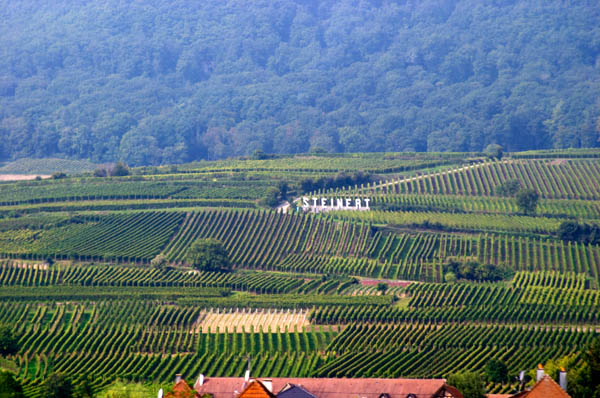
The producers
Here are a few recommendations of some excellent Alsace producers.
But there are many, many more!
Domaine Hugel in Riquewihr has 25 acres and buys additional grapes from a hundred different growers around Alsace. It is perhaps the most famous Alsace producer of all. Today is Marc Hugel, thirteenth generation, who runs the winery.
Jean Hugel, the now-deceased father of Marc and a great Alsace personality, was a great advocate for the introduction of the Grand Cru designation in the late 70s. Later he protested against it by not using the designation on their bottles and argued that it is only the producer’s name that can guarantee the quality.
Dopff au Moulin in Riquewihr is an old wine company dating back to the 1500s. It has 58 hectares. Known primarily for its Crémant d’Alsace (sparkling wine) they also make a lot of still wines of good quality.
Schlumberger in Guebwiller is the largest wine company in Alsace with a total of 124 ha vineyards. It keeps a high and consistent quality with gewurztraminer wines as speciality.
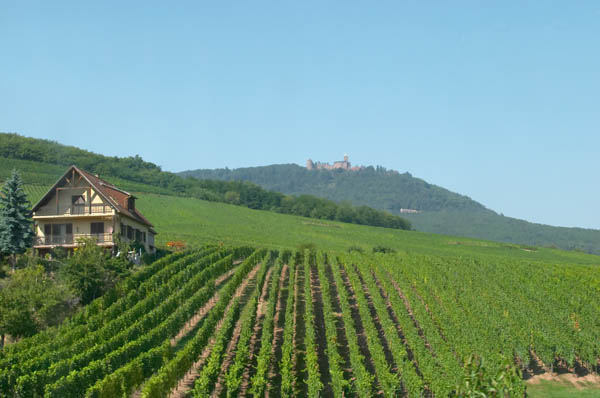
Zind Humbrecht in Wintzenheim has 30 hectares of vines and is one of the absolute top producers. Léonard Humbrecht, a legend in Alsace, and his son Olivier leads an enthusiastic campaign against too high yields, especially in the Grand Cru wines, which unfortunately are allowed in Alsace.
Marc Kreydenweiss Andlau has 10 hectares and made his first vintage in 1971. He belongs to the innovative new band of winemakers in Alsace: he has planted chardonnay, he sometimes ages his wines in oak, he mixes riesling and pinot gris, he grows organically since 1991, is very quality conscious with yields of less than 40 hl/ha (which is very low for Alsace) .
Pierre Frick in Pfaffenheim has a small vineyard of 8 hectares that he manages entirely according to the biodynamic principles
Léon Beyer, Eguisheim, 20 hectares.
Wolfberger Cave Vinicole in Eguisheim is one of the best of Alsace’s many co-operatives. Makes good wines at low prices.
Cave Vinicole de Colmar. Again, a good cooperative.
André Kientzler, Ribeauvillé, 10 hectares.
Trimbach in Ribeauvillé is even an old winery with a long history, founded by Jean Trimbach in 1626. Very good quality for all their wines, made on the 14 ha property. Trimbach is primarily known for its Riesling wines. Their Clos Sainte Hune, from a vineyard of 1.3 hectares, is considered one of the best Alsatian riesling wines.
Domaine Weinbach in Kaysersberg, managed by Colette Faller and her two daughters, is currently one of the best in Alsace. It is an old property of 24 hectares of very old vines. The secret behind the success lies in the low yields and a late harvest. The grapes for the Cuvée Sainte Catherine are harvested on the Ste Catherine Day on November 25.
And also:
- Albert Mann in Riquewihr,
- Dopff & Irion in Colmar,
- Paul Blanck in Kaysersberg
- JosMeyer in Colmar,
- Kuentz-Bas in Colmar,
- Marcel Deiss in Bergheim,
- Ostertag in Epfig,
- Rolly Gassmann in St-Hippolyte,
- Cave Vinicole the Pfaffenheim
- …Plus many more!
[box type=”info” style=”rounded” border=”full”]Alsace is spectacularly beautiful with its old picturesque villages, its steep vineyards with vines in ruler-straight rows and with its unique gastronomy. Why not go there there and experience it on the spot: on a wine tour with BKWine to Alsace you will experience many delicacies, wine, food and more![/box]
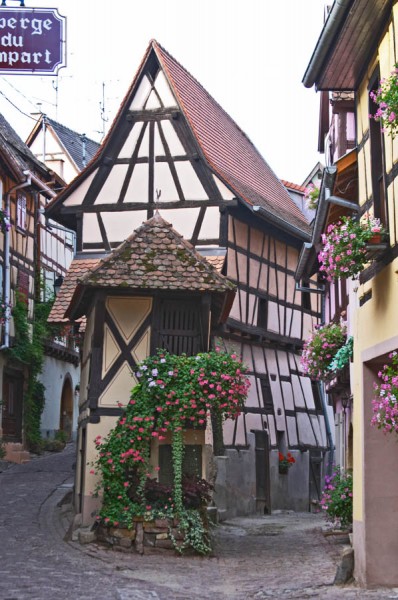




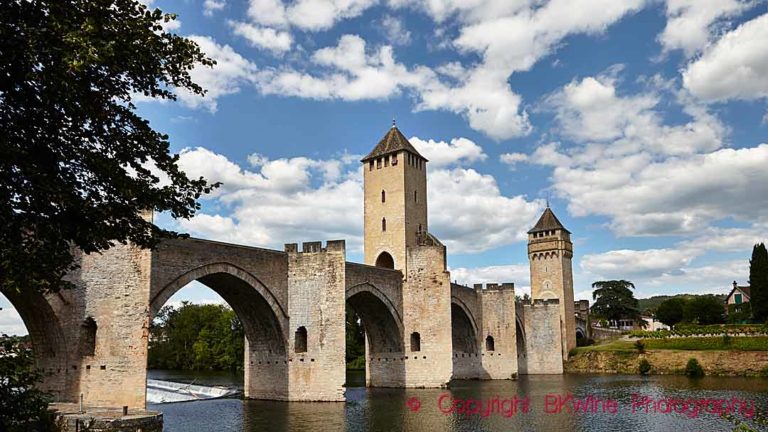
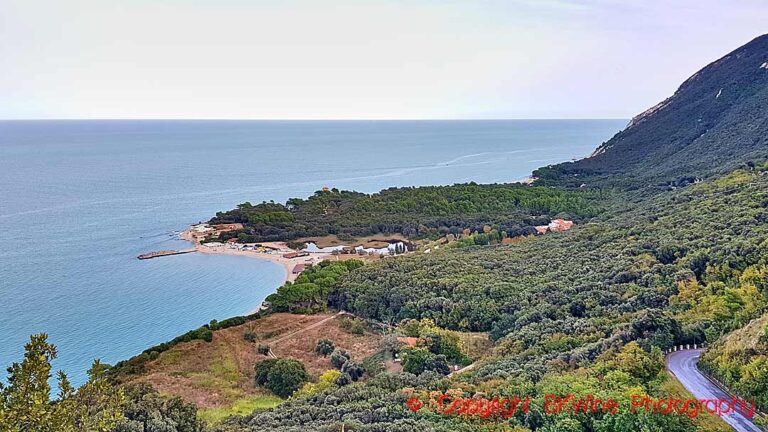






2 Responses
Hi Britt & Per,
About 10 years ago I spent 5 days biking through Alsace. In the evenings at and after dinner the wines were explored. I came away with the impression, which I still have, that the best wine in taste and price was the Pinot Blanc. For my palate the Gewürztraminer overwhelms, the Pinot Gris is too heavy, and though they profess it’s dry to me it tastes sweet, and the Riesling, like in Germany, a little too sweet (I know, they claim it’s dry) and over hyped and over priced. I know my opinion goes against grain (actually the beer is good) but as some wise person once said, there is no accounting for taste.
All the best,
Jim Gabler
Hi Jim,
How right you are!
Yes, there are some very good Pinot Blanc in Alsace, even better today than they were 10 years ago. And still very dry. I understand your problem with the other grapes. The grapes from Alsace have their own, strong personality which, of course, also makes them interesting.
Thanks for your comment,
Britt